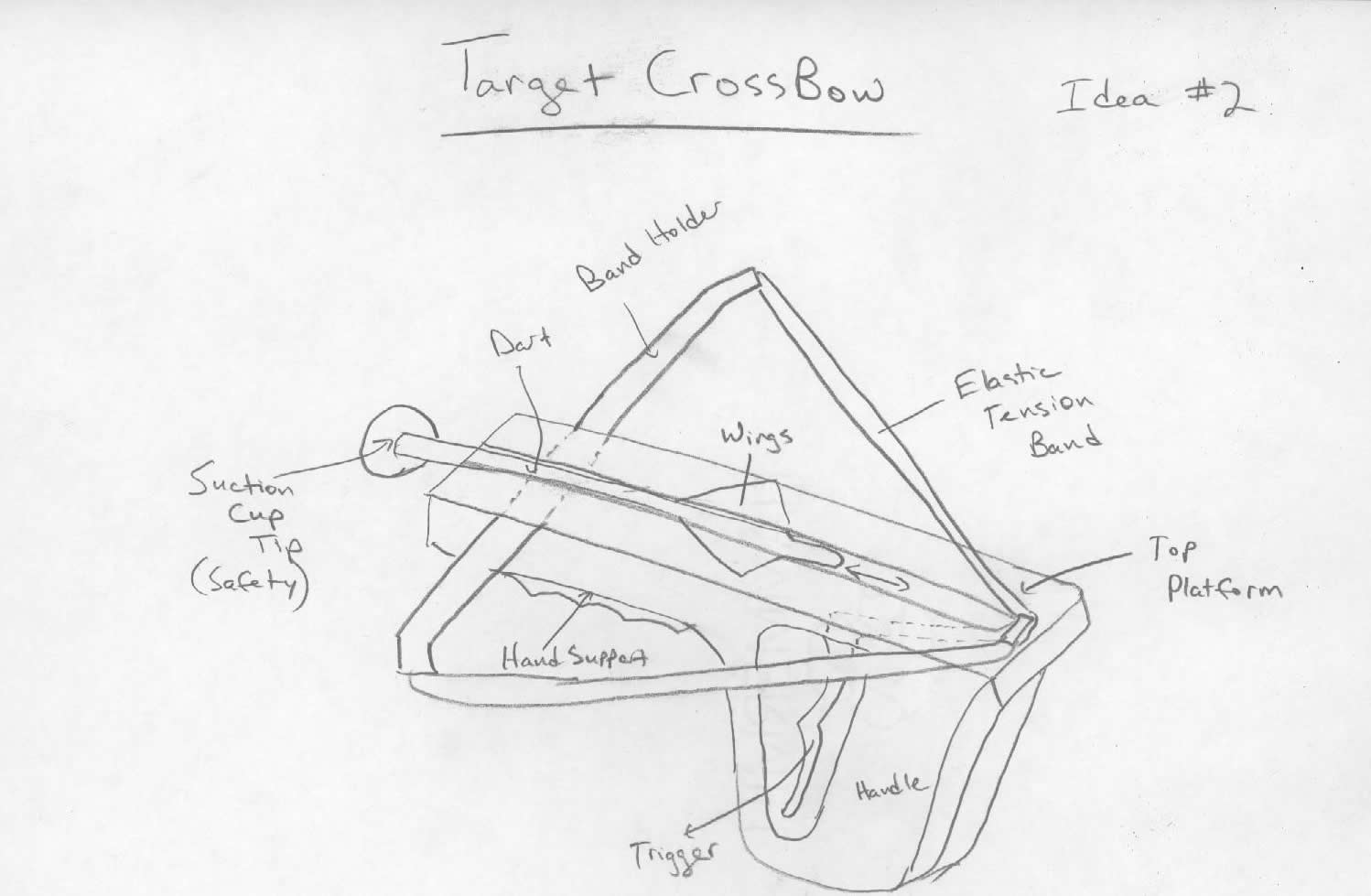Target Crossbow

Target Crossbow, a realistic, yet safe version of the famed archer's weapon
- The crossbow will work using the same principles as a real crossbow, with the forces and dimensions scaled down. Stiff foam arrows will also be used for safety as well as to reduce cost of manufacturing. The arrow will be loaded in the channel of the top platform, and the elastic band will be connected to the back of the arrow. A holding mechanism will keep the arrow in position until the trigger is pulled and the elastic band propels the arrow through the air.
- The toy will be approximately the size of a small hand gun, with a slightly longer "barrel" or top platform because an arrow is being used and not a much smaller sized bullet. The top platform should be around 12 inches in length.
- The main principle behind this toy is the conversion of elastic potential energy into kinetic energy, or the propulsion of the arrow. Other key ideas will be aerodynamics (arrow trajectory), friction, and negative pressure (suction cup arrow tip)
- In order to be manufactured with high tolerances and quality materials, the crossbow will have a fairly high production cost per unit, probably somewhere in the $8 to $12 range. This expense as well as the unique nature of the toy (very few realistic child's crossbows) would cause an expected retail price somewhere in the $40 to $60 dollar range. However, the "cool factor" of this toy will be quite high, and the reasonable cost is far less than even the lowest level IPod or PS3 gaming system. Prices are variable, and different skill levels of this toy can be created.
- Though the toy utilizes foam arrows and suction cup tips for safety, there is also some room for danger. An exposed elastic band could cause very mild injury, so the toy would probably be recommended for age groups over 10, which is probably when this type of toy would be of interest to children anyway
- The quality of materials would also allow the toy to remain in usable condition even after years of abuse. The elastic bands are the weak points of the structure and they are to be designed so that they can be easily replaced for very little cost.
Toy concept 1 | Toy concept 3
Nick Burkholder
Carnegie Mellon University
February 7, 2008

